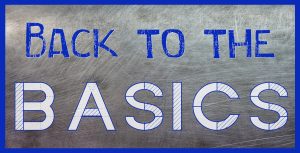GTAW, GMAW, Sub-Arc and Stick Welding – What’s the difference? Part 2
I was hoping to have a welding story for you by the time I sat down to write this article, but this wonderful MN winter got in the way of that. The day I was supposed to go down and have my lesson, we had that terrible snow storm and I worked from home. Who else thinks Mother Nature and Old Man Winter should just kiss and make up? It’s time for Spring! Anyway, neither Joe (our Welding Trainer) nor I have had time since for that, but it will happen! I am nothing if not persistent!
This time around I am going to talk about the difference between Sub-Arc Welding and Stick Welding. Let’s start with Sub-Arc Welding or Submerged-Arc Welding. This form of welding is used when there are thick sheets of metal that need to be joined. It creates long joints, saves time and creates more consistent welds. The weld itself cannot be seen until finished because the flux, which is used instead of a shielding gas, needs to be removed to see the weld. I was able to enjoy a small amount of time out in the shop watching this process and while I was fascinated, the welder manning the controls informed me that it is not as fun as it looks and gets rather boring to watch after a while. While I have no doubt she is probably right, it was fun for me! The fun part of Sub-Arc in my opinion, is that the welding is done under a layer of flux.
What is flux you ask? (Yes, I did too!) Flux is a material that looks like grey sand. Hopefully you all remember Shawn from my last article, he has agreed to help me again. He says flux is granular fusible materials containing oxides of manganese, silicon, titanium, aluminum, calcium, zirconium, magnesium and other compounds. Sub-Arc Welding is mainly used on our longitudinal (straight) and circumferential (round) seams on our vessels. It can also be used for fillet welds.
Stick Welding – SMAW (Shielded Metal Arc Welding) – is another Arc Welding process that always uses a filler metal. This is typically a flux coated stick of metal that shields the weld and stabilizes the arc, which makes so there is no need for a shielding gas like in GTAW and GMAW. This process is used for heavy repairs or construction and on thicker materials such as cast iron because it creates such a strong weld. It is a harder weld to create and is for more skilled welders, but for either a beginner or a novice, this process leaves a weld that is the least pretty to look at of all the types. Hence, why it is the last one I am talking about…
So to sum all this up, GTAW is the prettiest, GMAW is the most commonly used, Sub-Arc is the strongest and Stick is the ugliest. But, they all have their place in our shop and all are used so that we are able to create anything that comes our way. Are you wondering what is up next? I have decided to switch gears a little. My next article will be related to our machining department. Check back in a couple weeks to find out the difference between milling, facing and turning operations.

